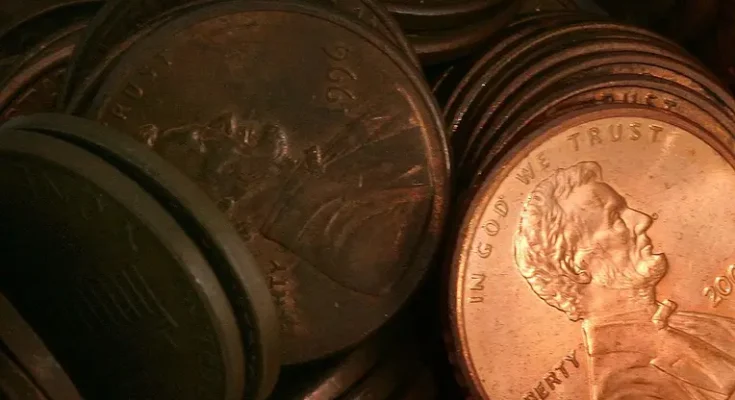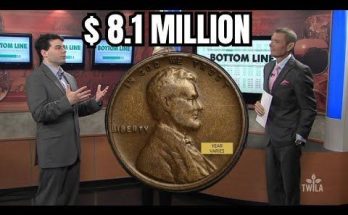FILE – Pennies lay in a pile July 6, 2006 in Des Plaines, Illinois. (Photo Illustration by Tim Boyle/Getty Images)
LOS ANGELES – The U.S. Mint will officially stop making pennies once its final stock of penny blanks is used up, a Treasury official confirmed Thursday. While no specific end date was given, the decision effectively marks the beginning of the end for the 1-cent coin.
This move follows a February directive from President Donald Trump, who ordered his administration to cease penny production. Trump cited the rising cost of minting the coin—now close to 4 cents per penny—and called it a wasteful use of taxpayer money.
“For far too long the United States has minted pennies which literally cost us more than 2 cents. This is so wasteful!” Trump wrote on Truth Social. “I have instructed my Secretary of the US Treasury to stop producing new pennies.”
Why is the penny being eliminated now?
The backstory:
There are about 114 billion pennies in circulation in the United States, but the Treasury says they are greatly underutilized. Despite being a staple of American currency since 1793, the penny has become an increasingly expensive coin to produce.
The cost to mint a single penny rose by more than 20% in 2024, according to the U.S. Mint. By halting production, the government expects to save around $56 million each year in reduced materials and minting expenses.
What happens once the blanks run out?
What we know:
The Mint’s current stockpile of penny blanks—metal discs used to create the coins—will be the last. Once those are gone, production will cease indefinitely. No new pennies will be minted unless Congress intervenes or a future administration reverses the decision.
Last year, the U.S. Mint produced 3.2 billion pennies, accounting for more than half of all U.S. coin production.
What we don’t know:
The Treasury hasn’t released a precise timeline for when the final blanks will run out, though FOX Business reports it’s expected to be “early 2026.” It’s also unclear how quickly existing pennies will fade from circulation, though most experts say they will remain in use for years due to their sheer volume.
What they’re saying:
Jay Zagorsky, a professor at Boston University and author of “The Power of Cash,” told the AP, eliminating the penny makes financial sense—but only if it’s paired with broader coin reforms.
“If we suddenly have to produce a lot of nickels—and we lose more money on producing every nickel—eliminating the penny doesn’t make any sense,” Zagorsky said.
Mark Weller, executive director of Americans for Common Cents, said his group believes penny production is nearing an “inevitable” end, but emphasized the need to make nickels more cost-effective.
“Let’s make sure we’re making our coins as least expensively as possible and maintaining the option to use cash in transactions,” Weller said.
The Source: This article is based on reporting from the Associated Press, which first revealed the Trump administration’s decision to end penny production. Additional information came from the U.S. Mint, Treasury Department statements, FOX Business and comments from economists and advocates interviewed by AP and The Wall Street Journal.



